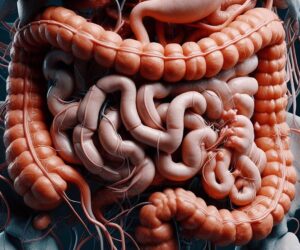You’re lying in bed, ready to sleep, but then it happens—the burning sensation in your chest, the sour taste in your throat, and the uncomfortable regurgitation of stomach acid. Nighttime acid reflux (or GERD) can make it nearly impossible to sleep, leaving you exhausted the next day.
GERD worsens at night because:
• Gravity isn’t helping – When you’re lying flat, stomach acid can move more easily into the esophagus.
• Swallowing slows down – During the day, swallowing helps clear acid from the esophagus. At night, this natural defense slows down.
• Saliva production decreases – Saliva neutralizes acid, but at night, your body produces less of it.
The good news? Your sleeping position can make a huge difference. By adjusting how you sleep, you can significantly reduce acid reflux and wake up feeling refreshed.
The Best Sleeping Position to Stop Acid Reflux
1. Sleep on Your Left Side (Best Position for GERD Relief)
Why it works: Sleeping on your left side keeps your stomach positioned below the esophagus, which helps prevent acid from rising. This position uses gravity to your advantage, keeping acid in your stomach where it belongs.
Scientific Proof: A study published in the Journal of Clinical Gastroenterology found that left-side sleeping reduces acid exposure in the esophagus compared to sleeping on the right side or back. This is because of the way your stomach is shaped—when you lie on your left side, the connection between your stomach and esophagus stays above acid levels, reducing reflux.
How to Sleep on Your Left Side Comfortably
✔️ Use a body pillow to keep yourself from rolling onto your back.
✔️ Keep your head elevated (more on this below).
✔️ If you’re a side sleeper, this is the easiest and most natural position to adopt.
🛒 Best Memory Foam Body Pillow for Side Sleeping
Positions to Avoid if You Have Acid Reflux
2. Sleeping on Your Right Side (Worst Position for GERD)
Why it’s bad: Studies show that sleeping on your right side can make acid reflux significantly worse. This happens because of the shape of your stomach—it allows acid to pool near the lower esophageal sphincter (LES), making it easier for it to escape into your esophagus.
🔻 If you frequently wake up with heartburn, try switching from your right side to your left.
3. Sleeping on Your Back (Unless Elevated)
Why it’s bad: When you lie flat on your back, it’s easier for stomach acid to travel upward into your esophagus, especially if your LES is weak or relaxed.
🔻 If you must sleep on your back, elevate your upper body to prevent reflux.
4. Sleeping on Your Stomach (Not Recommended for GERD)
Why it’s bad: Sleeping on your stomach puts pressure on your abdomen, which can push stomach acid into the esophagus. This position is especially problematic for people who have a weaker LES or experience frequent regurgitation.
Bonus Tip: Elevate Your Upper Body for Maximum Relief
No matter which position you sleep in, keeping your upper body elevated can help prevent acid reflux.
How Elevating Your Upper Body Helps:
✔️ Uses gravity to keep acid in your stomach.
✔️ Reduces pressure on the LES, preventing acid leaks.
✔️ Promotes better digestion and reduces regurgitation.
Best Ways to Elevate Your Upper Body for GERD:
🔹 Use a wedge pillow – A GERD-friendly wedge pillow raises your head and torso, reducing reflux while you sleep.
🔹 Raise the head of your bed – Use 6-8 inch risers under the bedposts to elevate your upper body naturally.
🔹 Avoid stacking pillows – Regular pillows only elevate your head and can strain your neck, making reflux worse.
🛒 Best Wedge Pillow for Acid Reflux
Final Tips for Sleeping Better with GERD
Besides adjusting your sleeping position, follow these tips to reduce nighttime acid reflux:
✅ Eat at least 2-3 hours before bed – Going to bed on a full stomach increases reflux risk.
✅ Avoid trigger foods before bedtime – Spicy, fatty, and acidic foods can make GERD worse.
✅ Drink water instead of alcohol or caffeine – Alcohol and caffeine relax the LES, increasing reflux.
✅ Wear loose-fitting pajamas – Tight clothing around the stomach puts pressure on your abdomen.


